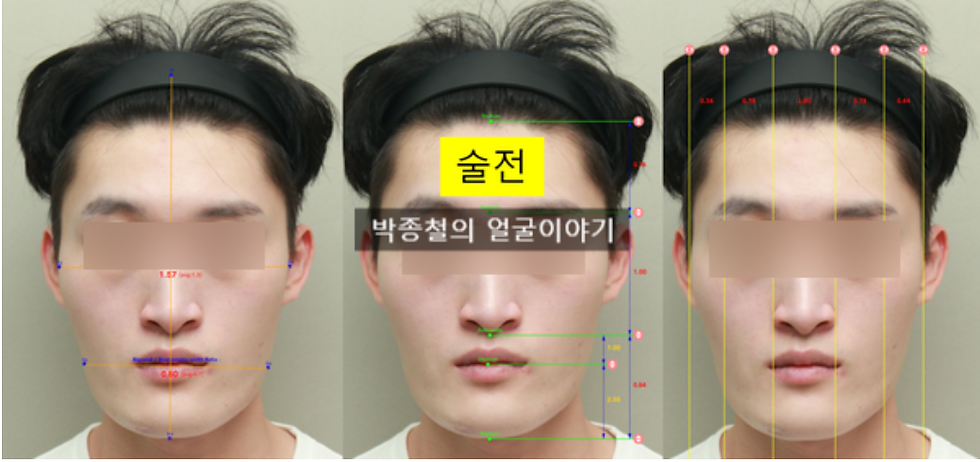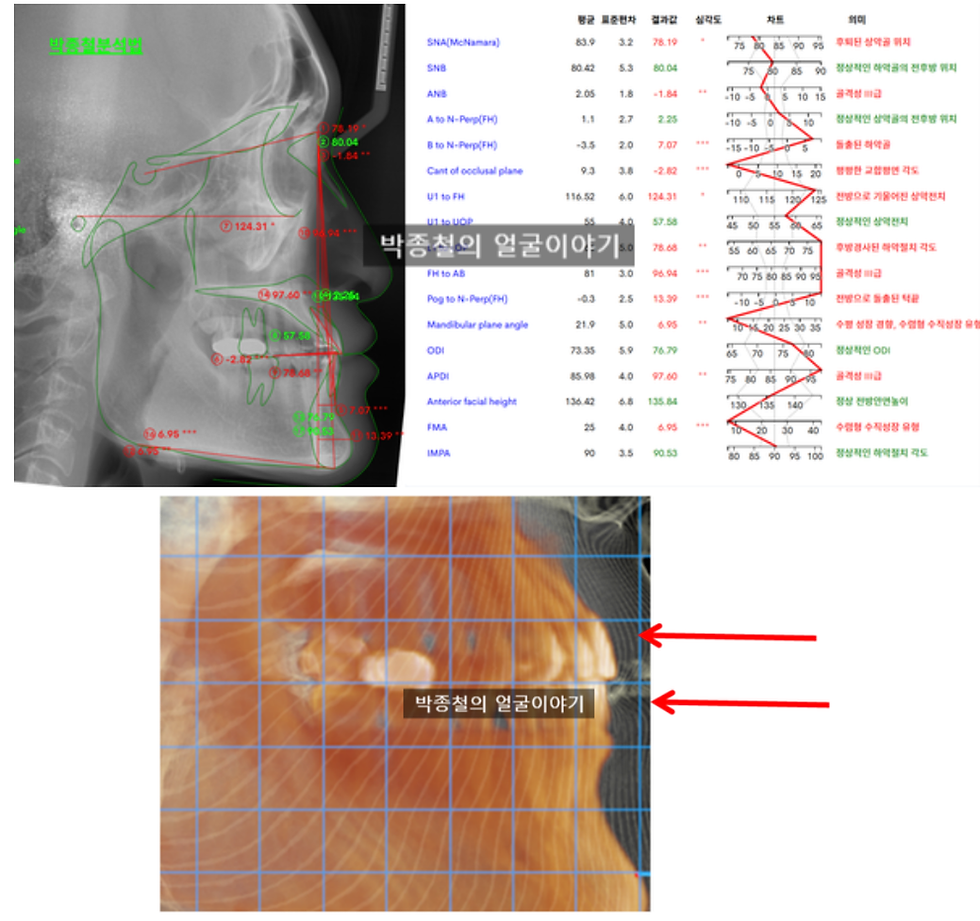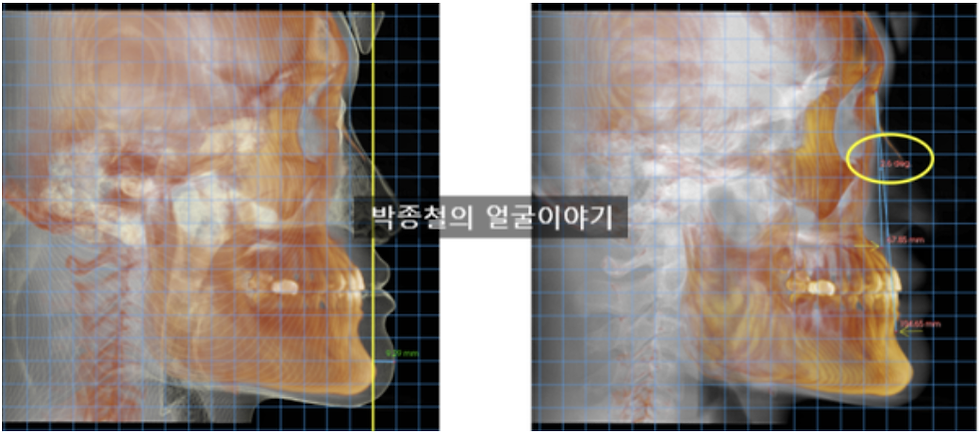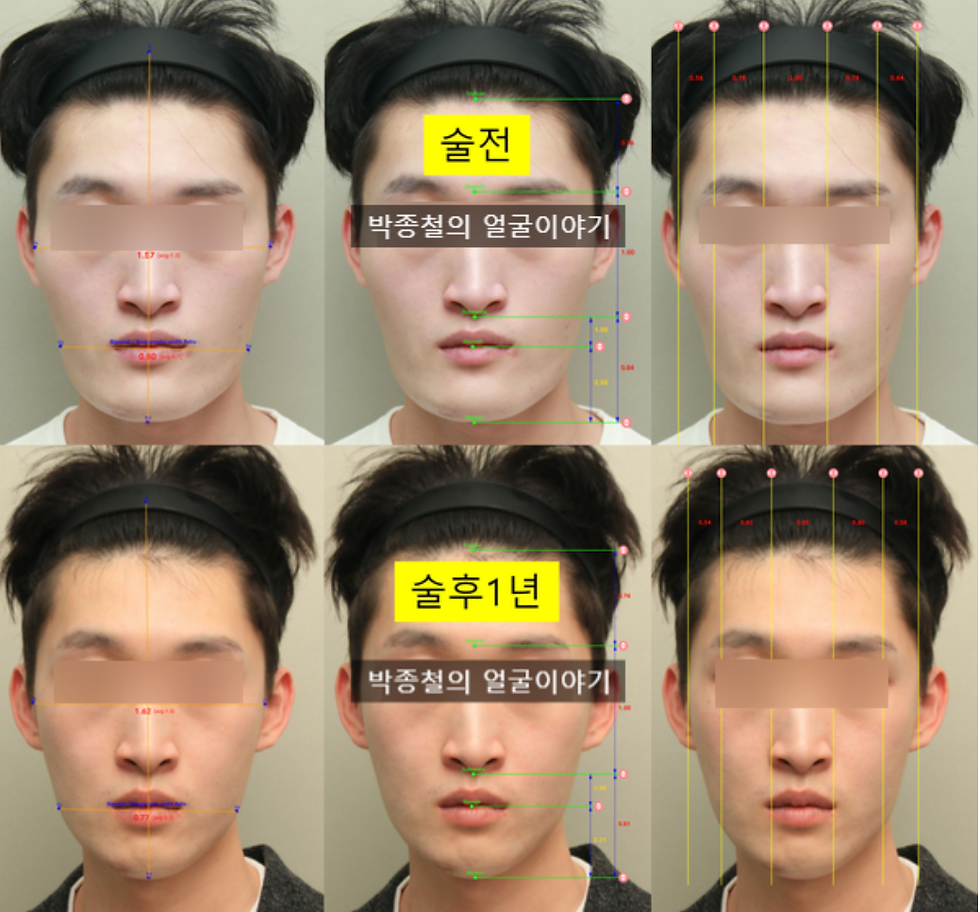A Case Study of Male Double Jaw Surgery: Correcting Mandibular Prognathism with a 1-Year CT-Verified Follow-up
- Dr. Park

- Aug 2
- 4 min read
The demand for aesthetic and functional facial improvement through orthognathic (double jaw) surgery and facial contouring procedures is steadily increasing among male patients. To provide an objective resource, this article presents a detailed case study of a male patient who underwent concurrent double jaw surgery for prognathism and a comprehensive facial contouring procedure (zygoma, mandible, and chin). We will review the precise surgical plan and the objectively measured results one year post-operation. This is an evidence-based review for those researching male jaw surgery outcomes.
Initial Consultation: Diagnosis Beyond the Chief Complaint
The patient initially presented with the chief complaints of a “long face, prominent cheekbones, and a wide jaw.” His desired procedure was facial contouring surgery (a three-part procedure involving the zygoma, mandible, and chin).

However, a precision diagnosis revealed a critical discrepancy between the patient's perception and his actual skeletal structure.
Objectively, the patient’s face was not vertically long. The ratio of his lower facial height to his mid-facial height was within the normal range, as was the overall facial length relative to its width. The primary reason for the "long face" perception was a short philtrum (the vertical groove between the base of the nose and the upper lip). This created an optical illusion, making the chin appear relatively longer and more protrusive than it was.

Proceeding with a surgery to shorten the chin, as one might in a typical facial contouring case, would have created an unnatural and disproportionate facial balance. Therefore, the surgical plan was developed to address the root cause while maintaining the chin's vertical length.
Precision Analysis with 3D CT: Quantifying the Skeletal Discrepancy
Although the patient had previously undergone orthodontic treatment and achieved a near-normal occlusion (Class I), the appearance of a protruding lower jaw (prognathism) persisted. This indicated that the underlying issue was skeletal, not dental.

A quantitative analysis using 3D CT imaging confirmed a diagnosis of severe skeletal mandibular prognathism. The mandible was measured to be protruded by 9.0 mm anterior to the subnasale (the point at the base of the nasal septum).

Furthermore, the analysis revealed facial asymmetry:
The chin tip was deviated 0.81 mm to the right.
The maxillary dental midline was deviated 1.25 mm to the right.

Surgical Planning: An Integrated Approach to Orthognathic and Facial Contouring Surgery
Based on the precise diagnosis, an integrated surgical plan was designed to harmonize the patient's entire facial skeleton.
1. Orthognathic Surgery Plan (Maxilla & Mandible)
Maxilla (Upper Jaw) Repositioning: To correct the asymmetry and re-establish a proper foundation, the maxilla was moved 1.3 mm to the left and 1.5 mm inferiorly. To correct the prognathism, it was also moved 3 mm posteriorly. The maxillary molars were impacted superiorly by approximately 5 mm to create an ideal smile arc.
Mandible (Lower Jaw) Repositioning: Following the repositioning of the maxilla, the mandible was set back. The plan was calculated to achieve a total posterior movement of 11.08 mm at the pogonion (the most anterior point of the chin).

턱끝의 가장 돌출된 지점(Pogonion)이 11.08mm 후퇴하도록 양악수술계획
2. Facial Contouring Surgery Plan (3-Part)
Zygoma Reduction (Cheekbone Reduction): The prominent 45-degree and lateral zygoma were sufficiently reduced to create a smoother, less angular facial contour.
Mandibular Angle Reduction (Jaw Reduction): The excessively developed mandibular angle was smoothly resected, preserving a natural angle at the gonion to avoid an artificial appearance.
T-Genioplasty (Chinplasty): While maintaining the vertical length of the chin, a T-shaped osteotomy was performed. A central segment of bone was removed, and the two sides were brought together to narrow the chin's width by 8 mm.
This combined approach is far more than simply "cutting bone." It is a meticulous, three-dimensional process of repositioning and reshaping, planned to the millimeter to consider overall facial harmony and function.
The 1-Year Post-Operative Result: Evidence-Based Outcomes
One year after the surgery, the results were evaluated using 3D CT scans and standardized clinical photographs.
The post-operative CT scans confirm the effective and planned reduction of the zygoma and mandibular angle. The overall facial shape was successfully transformed from an angular structure to a smoother, ovoid contour.

A frequent concern in significant mandibular setback cases is the potential for a "double chin" or submental laxity. In this case, despite a major setback of over 10 mm, the patient’s neckline remained sharp and well-defined, a result of meticulous planning that accounted for soft tissue changes.

The most significant outcome was the improvement in facial proportions. As intended by the surgical plan, the philtrum naturally lengthened. This created the visual effect of a shorter, more balanced face, even though the actual skeletal length of the face remained unchanged. This result highlights the critical importance of analyzing facial proportions in detail when planning for prognathism correction.

Conclusion: The Critical Role of Accurate Diagnosis in Surgical Success
This case study of a male patient's combined orthognathic and facial contouring surgery demonstrates a key principle: successful outcomes are rooted in an accurate diagnosis.
The success was not achieved by simply addressing the patient's subjective complaint of a "long face." It was achieved by using objective, data-driven tools like 3D CT to identify the true underlying issue—severe mandibular prognathism—and designing a comprehensive plan to correct it. This approach allowed for both functional improvement and the creation of an aesthetically ideal facial proportion.
For individuals researching male jaw surgery, it is crucial to seek out information that is based on accurate diagnostics and systematic surgical planning, rather than relying on subjective testimonials alone.

남자 주걱턱 양악수술 후기



Comments